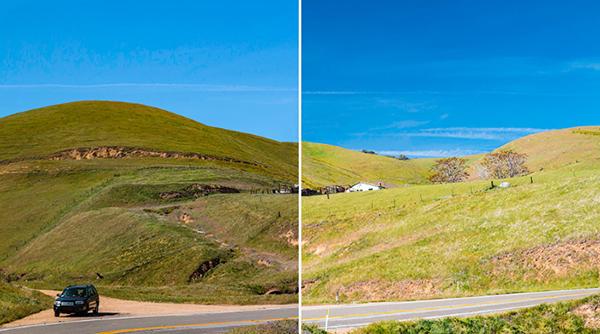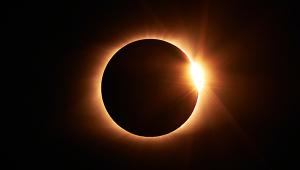How Polarizing Filters Work and Why You Should Use One on Your DSLR Camera

Polarizers reduce glare, let you see under the water and darken blue skies. We all know this because we’ve read those weary descriptions hundreds of times. Those benefits are just low-hanging fruit. The real benefits of a polarizing filter are more subtle—but more powerful when properly applied.
With the glare removed, colors are more richly saturated and the annoying shiny spots that appear as blown highlights on flat surfaces are gone.
When light reflects off the surface of an object, it scatters in zillions of directions. Most of the time when we look at an object—a tree leaf, the surface of a lake or an automobile—we see color and a significant amount of glare. Glare is so common that our brain’s firmware tends to ignore it most of the time.

Enter the Polarizer. What a polarizing filter does is really rather simple: it absorbs nonparallel lightwaves and allows us to see the objects without the omnipresent glare. In the case of water, we can peek through the glare on the top layer and actually see beneath the surface.
Besides merely eliminating reflections from water and glass windows, polarizing filters suppress light that would otherwise be scattered from other flat surfaces—like car fenders and glossy painted walls—and thereby enhance the true colors of objects. The main side effect is an apparent increase in color saturation without change in color balance.
How Polarizers Work
Here is how it was explained to me. I subsequently use this analogy without claiming it is original.
The example used to explain a polarizing filter’s influence on lightwaves involves a picket fence and a rope. If you forcefully and erratically whip a rope that’s tied to a distant tree, the waves created by the rope are entirely random. Whip it up, down or sideways—the length of rope flips and flops all over the place.
But if the rope is threaded through a picket fence, the motion will conform to the shape defined by the two pickets through which the rope passes.
The rope that extends between your hand and the fence can be jumping around like a tomcat shaking a rat, but the rope on the other side of the fence is moving is a consistent wave pattern.
In other words, whip a rope through a vertical fence and the rope can only move up and down, regardless which direction you’re shaking the rope. If the fence is horizontal to the ground instead of vertical, the rope moves from side-to-side rather than up-and-down.

Let’s unpack this. Polarizing filters are constructed using two stacked rings. One ring is threaded and attaches to the camera lens; the other ring holds the glass which contains the microscopic (and perfectly aligned) particles that filter the light that passes through. These particles correlate to the slats in the picket fence. Rotating the outer ring is analogous to turning the picket fence toward its side.
Logically, if you twirl a rope between fence pickets, much of the effort is wasted because the motion is dampened by the slats. The same dynamics are at work with polarizing filters: they absorb some of the light and therefore you must increase exposure. This exposure increase is commonly called the “filter factor” and is generally between 1.5X and 2.5X, depending on filter brand and working conditions.
Maximum Impact
To find the area of the sky most strongly affected by a polarizer, make an L-shape from your index finger and thumb and point it at the sun as though you were shooting a rubber band into space. Your thumb does not have to be perpendicular to the ground. Slowly rotate your wrist while keeping your finger pointed at the sun. With your index finger aimed at the sun, your moving thumb will point toward the portions of the sky where a polarizing filter delivers maximum results.

The Downside
Proving once again that there’s no free lunch, there are a couple negative aspects to using a Polarizer. This explains why everyone doesn’t use one all the time.
Polarizers require an increase in exposure as explained above. Your DSLR will still set the correct exposure automatically. In some cases, that extra exposure requirement is a dealbreaker. But more and more cameras perform exceptionally well at higher ISO settings, so it’s becoming easier to use a Polarizer without significant penalty simply by cranking up the ISO.
(Turn this inside out and you have an additional benefit. A PL filter can act as a Neutral Density filter. When shooting snow or at the beach it’s often too bright to use a largish aperture. Spin on a PL and the exposure is increased by a couple of stops.)
The other reason why it’s not advisable to use a PL filter all the time: it must be properly aligned before each shot. Having it in the wrong position can actually increase glare and strengthen reflections.
—Jon Sienkiewicz

















































